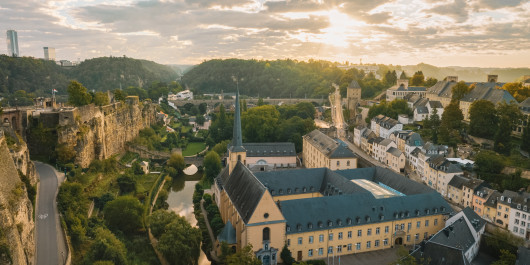The walk "Topography of human rights" in Luxembourg City
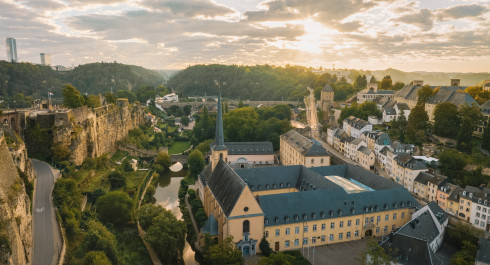
The walk "Topography of human rights" in Luxembourg City
The ‘Topography of Human Rights’ trail focuses on places that either bear witness to human rights violations or symbolise their implementation and protection.
The focus is on the development of the Luxembourg people into an open, democratic and diverse society, whose values are firmly rooted in the UN Declaration of Human Rights. At the same time, the aim is to emphasise that society is subject to constant change due to internal and external influences and is therefore fragile and at risk.
The aim of this route is to show visitors that democracy and respect for human rights cannot be taken for granted, even in modern states, and that it is important to remain vigilant in order to nip negative tendencies in the bud before they seriously jeopardise society.
Map explanation: The purple tour is the self-guided tour accompanied by the audioguide. The green tour is the guided tour proposed by us periodically.
Points of interest on the map
Points of interest
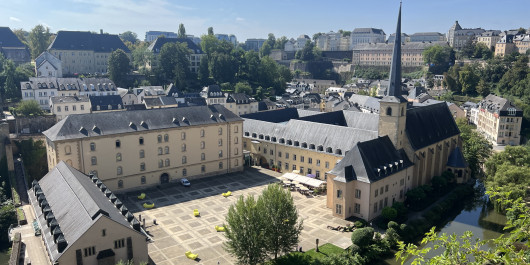
1. Neumünster Abbey
The Neumünster Abbey was built in the years 1543-1544 to replace the previous Altmünster Abbey. In 1789, the French administration installed a prison in the former convent building along with barracks...
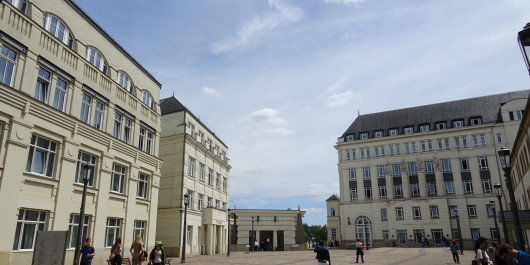
2. The courts of justice
Welcome to the Holy-Ghost-Plateau also called ‘Plateau du Saint-Esprit’. This is where since 2008, the impressive new Courts of Justice and the most important judicial institutions of the country are ...
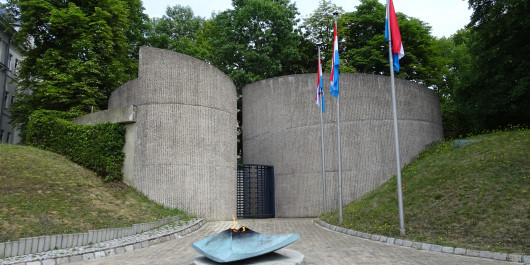
3. National Monument of Solidarity
The National Monument of Solidarity reminds us of the sacrifices during World War II, the resistance movement against and the solidarity of the Luxembourg population in its opposition to the Nazi occu...
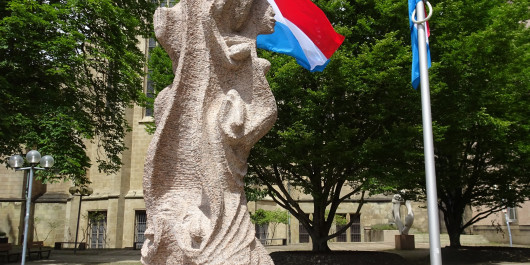
4. Shoah Memorial
The memorial for the victims of the Shoah was inaugurated on 17th of June 2018 to commemorate the persecution, deportation and killing of Jews during the Second World War.Before the war, more than 3,5...
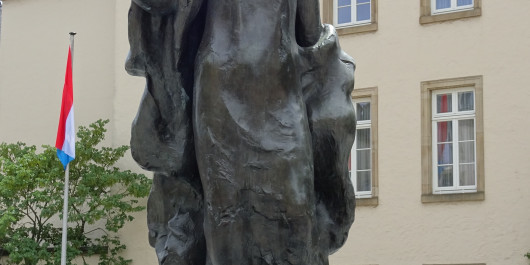
5. Memorial to the Grand Duchess Charlotte
The memorial in honour of the Grand Duchess Charlotte was inaugurated on the 29th April 1990 in the presence of the Grand Ducal family.On a circular multi-level rostrum, surrounded with geometrical el...
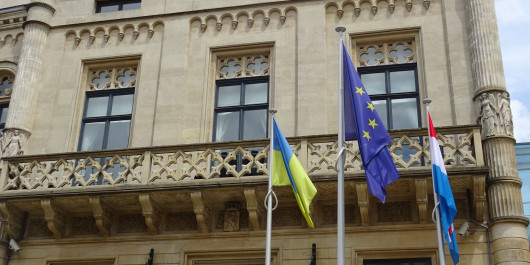
6. Chamber of Deputies
When walking along the ‘Krautmarkt’ (Marché aux Herbes), you may have trouble noticing the Chamber of Deputies next to the imposing Grand Ducal palace as it seems very small and modest in comparison w...
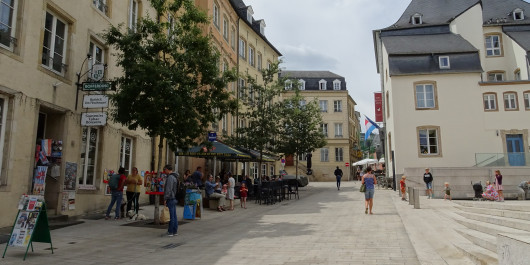
7. The Fish Market
Welcome to the Fish Market in Luxembourg!This was once the political, economic, religious and cultural centre of the city. While the fortress was being built on the ‘Bock’ Promontory, the first small ...
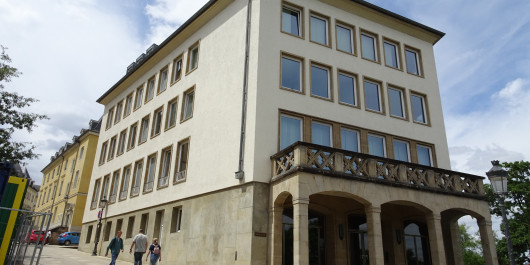
8. Council of State
Since 1959, the Council of State has had its official seat in this listed building in the heart of the upper town near the Fish Market and opposite St Michael’s Church.The Council of State and the Cha...
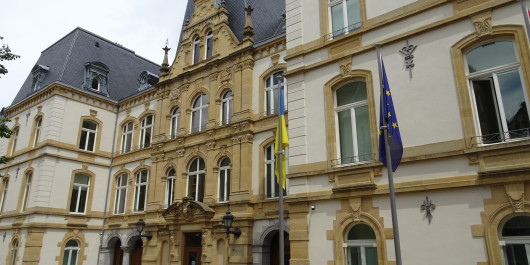
9. Old Court of Justice
The building was originally built in 1545 as a small city palace for the royal counsellor, city assessor and businessman Nicolas Greisch.In 1564, the Spanish crown acquired the building and from then ...
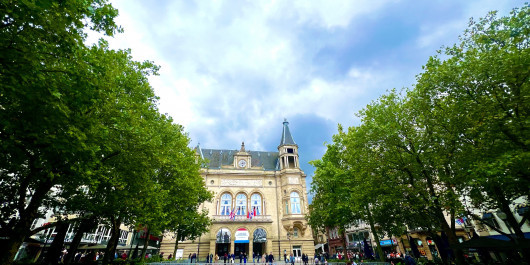
10. Place d'Armes
The ‘Place d’Armes’ in French or ‘Plëss’ in Luxembourgish is one of the most popular meeting places for both Luxembourg locals as well as tourists who wish to experience the atmosphere of Luxembourg’s...
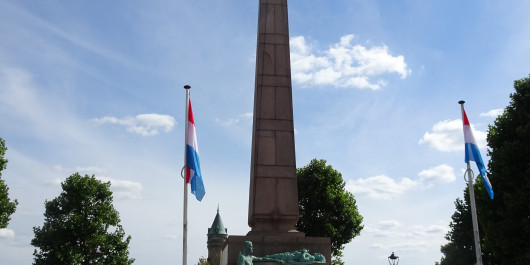
11. Gëlle Fra
This monument ‘Gëlle Fra’, the ‘Golden Lady’, visible from afar and located on the ‘Place de la Constitution’, was initially erected as a memorial for the fallen soldiers of World War I. The Luxembour...
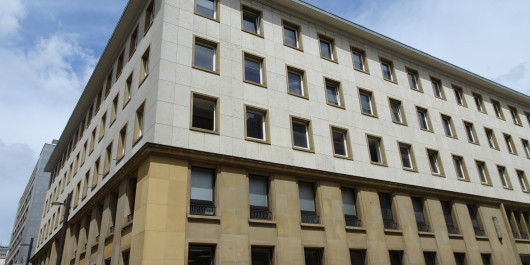
12. Old Synagogue
The origin of the Jewish community in Luxembourg goes back to the year 1276. Despite a number of pogroms, the community survived until 1530 when it was disbanded during the Habsburg reign of Charles V...
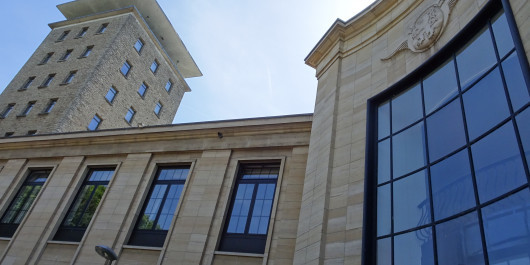
13. Villa Louvigny
The bulwark situated in the municipal park today was part of the fortress erected in 1672 and given the name of the Spanish general and commander at the time ‘Louvigny’.The declaration of Luxembourg’s...
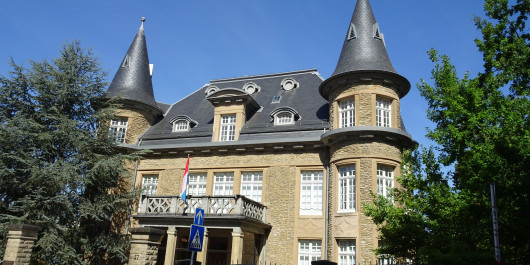
14. Villa Pauly
The Villa Pauly is located on the Boulevard de la Pétrusse which is part of the Bourbon Plateau. This quarter of the city only developed after the ramparts of the Luxembourg fortress were demolished. ...
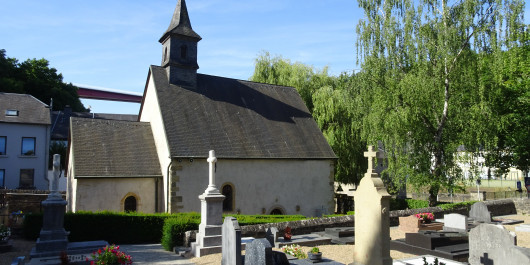
15. Siechenhaff
‘Siechenhaff’ (‘Val des Bons-Malades’ in French) is the local name for part of the present Pfaffenthal quarter of Luxembourg city. It is reached when passing under the historic archway - ‘Siechentor’ ...
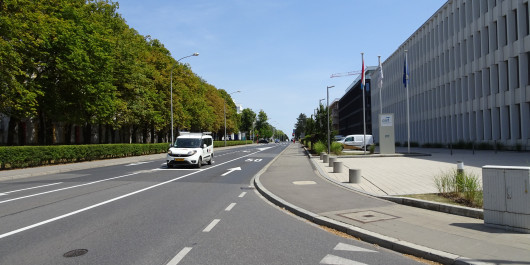
16. The Gallows of Luxembourg City
There are three locations in the city where gallows used to stand, in other words, the sites where criminals were executed. Imagine you are now present at one of these, namely where the gallows of the...
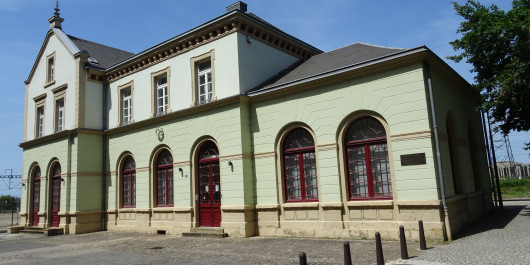
17. Hollerich Train Station
The former Hollerich freight train station is located in the south western part of the city. It was inaugurated in 1900 when the train line Luxembourg-Petingen built by the Prince Henry Company was ta...
Important information
Duration
2 hours
Infos
Start & Arrival
Place d'Armes
Copyright: ACAT-Luxembourg
Price
Book your personal guide:
| Group of 1 to 20 people | 120€ |
Book a guided tour for your group at the date, time and in the language of your choice. Please book at least 10 working days in advance.
Audio guide
The ‘Topography of Human Rights’ trail focuses on places that either bear witness to human rights violations or symbolise their implementation and protection.

